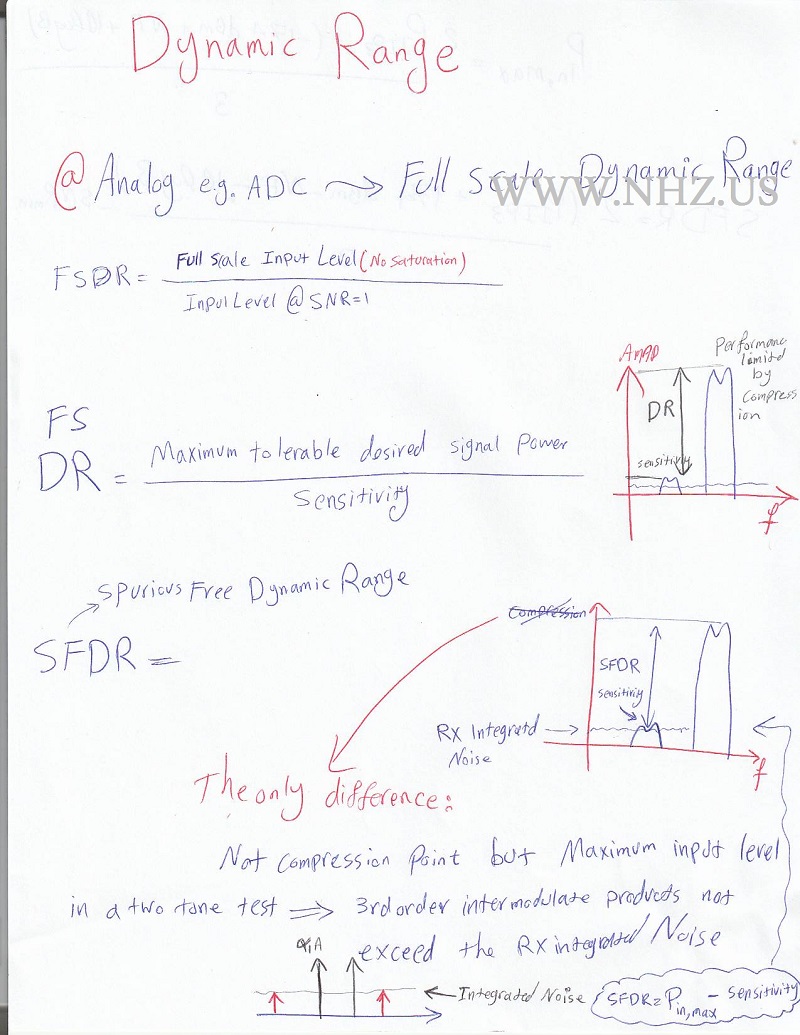Understanding Dynamic Range in RF Analog and Digital SystemsDynamic range is a critical concept in both RF (Radio Frequency) analog and digital systems. It refers to the difference between the smallest and largest signals a system can process effectively. Understanding dynamic range helps in designing and optimizing communication systems for better performance and accuracy. What is Dynamic Range?Dynamic range is the ratio between the maximum and minimum signal levels that a system can handle without significant distortion or loss of information. It is usually expressed in decibels (dB). In simpler terms, dynamic range tells us how well a system can capture both very weak and very strong signals. A system with a wide dynamic range can handle a broader spectrum of signal strengths, making it more versatile and reliable. Dynamic Range in RF Analog SystemsIn RF analog systems, dynamic range is crucial because these systems often deal with a wide range of signal strengths. RF analog systems include components like amplifiers, mixers, and filters, each contributing to the overall dynamic range. Key Factors Affecting Dynamic Range in Analog Systems
Dynamic Range in Digital SystemsIn digital systems, dynamic range is determined by the resolution of the analog-to-digital converter (ADC). The ADC converts analog signals into digital form, and its resolution (measured in bits) defines the smallest change in signal level it can detect. Key Factors Affecting Dynamic Range in Digital Systems
Comparing RF Analog and Digital SystemsBoth RF analog and digital systems aim to maximize their dynamic range, but they do so through different methods and technologies. In RF analog systems, components like low-noise amplifiers (LNAs) and high-quality mixers are used to extend the dynamic range. In digital systems, advancements in ADC technology and signal processing algorithms play a crucial role. Advantages of Analog Systems
Advantages of Digital Systems
Question & AnswerQ: What is dynamic range? A: Dynamic range is the difference between the smallest and largest signals a system can process effectively without significant distortion. It is expressed in decibels (dB). Q: Why is dynamic range important in RF analog systems? A: In RF analog systems, dynamic range is important because these systems deal with a wide range of signal strengths. A high dynamic range ensures that both weak and strong signals can be processed accurately. Q: How is dynamic range determined in digital systems? A: In digital systems, dynamic range is determined by the resolution of the analog-to-digital converter (ADC). The bit depth of the ADC defines the smallest change in signal level it can detect, affecting the dynamic range. Q: What are some key factors affecting dynamic range in analog systems? A: Key factors include the noise floor, the linear range of amplifiers, and intermodulation distortion. Lowering the noise floor and minimizing distortion helps increase the dynamic range. Q: What are the advantages of digital systems over analog systems? A: Digital systems offer higher precision, flexibility, and the ability to reconfigure and update through software changes. They can also achieve better accuracy due to advanced signal processing techniques. ExamplesExample 1: Dynamic Range in an RF Analog SystemConsider an RF analog system used in a radio receiver. The system must handle signals from very weak distant stations as well as strong local stations. By using a low-noise amplifier (LNA) to lower the noise floor and high-quality filters to minimize intermodulation distortion, the system can achieve a wide dynamic range, ensuring clear reception of both weak and strong signals. Example 2: Dynamic Range in a Digital SystemImagine a digital communication system using an ADC with a 16-bit resolution. The high bit depth allows the system to detect very small changes in signal levels, resulting in a wide dynamic range. This is crucial for applications like digital audio recording, where capturing both the quietest and loudest sounds accurately is essential for high-quality recordings. ConclusionDynamic range is a vital parameter in both RF analog and digital systems. It defines the capability of a system to process a wide range of signal strengths effectively. In RF analog systems, dynamic range is influenced by factors like noise floor and amplifier linearity. In digital systems, the resolution of the ADC plays a crucial role. Understanding and optimizing dynamic range is essential for designing robust and efficient communication systems, whether they are analog or digital.  |